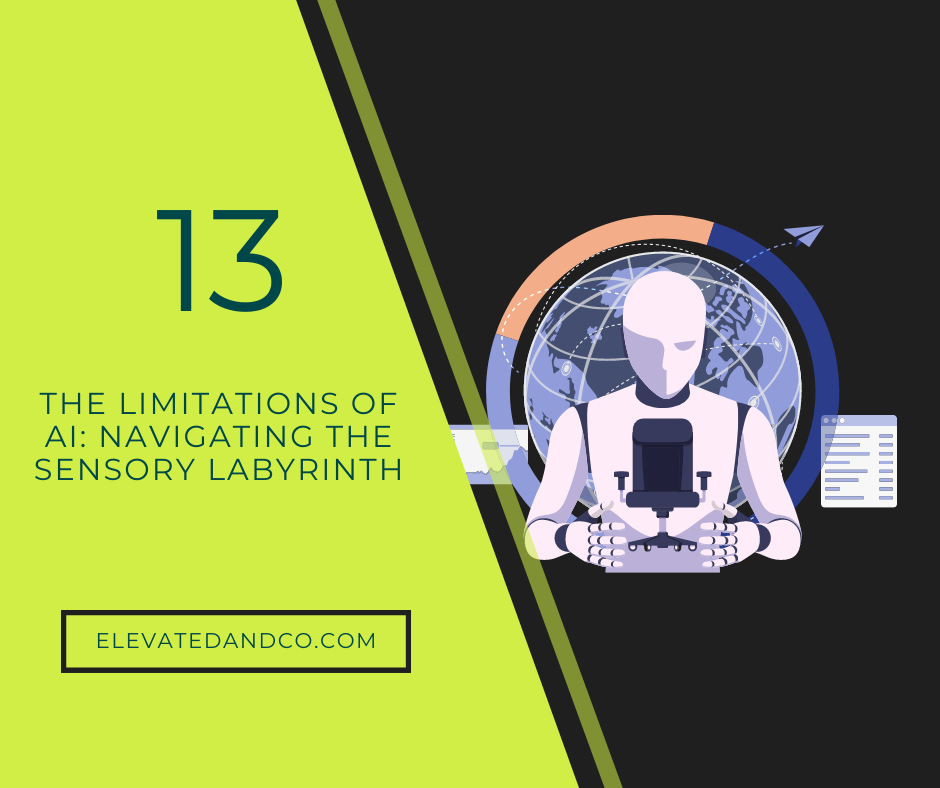Artificial Intelligence (AI) has revolutionized numerous industries, offering unprecedented data analysis, automation, and predictive modeling capabilities. Its ability to process vast amounts of data at lightning speeds and extract meaningful insights has positioned AI as a game-changer in many sectors, from healthcare to finance.
However, AI encounters significant challenges when it comes to understanding the complex web of human sensory pain points. Human sensory experiences are not just about physical sensations; they are deeply intertwined with emotions, memories, cultural contexts, and personal histories. These experiences are subjective and vary widely from one individual to another, making them difficult to quantify or categorize systematically.
For instance, a particular perfume’s aroma might evoke nostalgia in one person, reminding them of a cherished memory, while it might be just a pleasant scent to another. Similarly, a piece of music might stir profound emotions in one listener, while another might find it enjoyable or indifferent.
This article explores the intricate nuances of human perception and emotions, areas that even the most sophisticated AI systems find challenging to navigate. While AI can recognize patterns, predict behaviors, and even simulate human-like interactions to a certain extent, it lacks the depth of understanding and empathy inherent to human beings. The emotional and sensory layers that make up human experiences are rich, multifaceted, and, at times, contradictory, making them a labyrinth that remains elusive to AI’s logical and objective frameworks.
While AI’s capabilities in data-driven domains are unparalleled, the world of human emotions, sensory experiences, and personal perceptions is a frontier it is still striving to understand and navigate.
AI: The Logical Maestro
Artificial Intelligence (AI) is a beacon of logical prowess and computational efficiency. Its core strength lies in its ability to process vast amounts of structured data, discern patterns, and accurately make predictions. AI’s logical capabilities have found applications in virtually every industry, from predicting stock market trends to diagnosing medical conditions.
However, AI finds itself on less familiar ground when it comes to the often intangible topic of human sensory experiences. Human emotions, perceptions, and sensory experiences are not always rooted in logic or objectivity. They are a complex tapestry woven from many factors: personal histories, cultural backgrounds, emotional states, and even the environment at the moment of experience.
For instance, while AI can analyze the chemical composition of a gourmet dish and even suggest improvements based on flavor profiles, it cannot truly grasp the emotional response a person might have when tasting a family recipe that brings back childhood memories. Similarly, while AI can analyze the wavelengths and frequencies of a song, it cannot feel the goosebumps a listener might get when a particular melody resonates with their heart.
Moreover, human sensory experiences often have non-verbal cues and subjective interpretations. A simple gesture, a fleeting glance, or the subtlest change in tone can convey emotions and meanings that are deeply personal and context-specific. These nuances, which humans instinctively understand and respond to, remain a challenging frontier for AI.
While AI excels as a maestro of logic, effortlessly orchestrating vast amounts of data and drawing objective conclusions, it still grapples with the subjective and emotional dimensions of human sensory experiences. The challenge lies in understanding these experiences and valuing and respecting their inherent complexity and depth.
Sensory Pain Points: Beyond Tangibility
At the intersection of physical sensations and emotional experiences lie sensory pain points. These are not just mere discomforts that one can touch, see, or hear; they are deeply personal experiences that resonate physically and emotionally.
Imagine the sensation of an itchy fabric against the skin. While the physical discomfort is evident, the emotional resonance might be more profound. It could remind someone of a childhood dress they were forced to wear on special occasions, leading to feelings of unease and constraint. Or consider the overpowering scent of a particular perfume that causes a headache and brings back memories of a past relationship or event.
Many individual experiences, cultural backgrounds, and personal histories shape these sensory pain points. They encapsulate memories, emotions, and personal preferences unique to each individual. A song that brings joy to one person might evoke sadness in another based on their associations with the melody or lyrics.
Processing feedback on sensory experiences poses a significant challenge. While AI can analyze data, recognize patterns, and even predict preferences to a certain extent, it struggles to delve into the intricate layers that underlie sensory pain points. The depth of human emotion, the weight of memories, and the nuances of personal experiences are dimensions AI finds difficult to fathom in its current state.
While AI’s capabilities in data analysis and prediction are unparalleled, the world of sensory pain points, with its blend of tangibility and intangibility, remains a complex puzzle. It serves as a reminder that some aspects of the human experience are so profoundly personal and multifaceted that they defy straightforward analysis.
The Human Touch: The Pinnacle of Sensory Marketing
Artificial Intelligence, with its vast computational capabilities and data-driven approach, has undeniably revolutionized many facets of modern business. However, its limitations in comprehending the intricate web of human sensory pain points highlight an essential aspect of marketing: the power of sensory experiences.
Sensory marketing delves deep into the human psyche, tapping into emotions, memories, and personal associations. It’s not just about what consumers see or hear; it’s about how a particular product or campaign makes them feel. Whether it’s the nostalgic scent of a specific fragrance, the comforting texture of a fabric, or the evocative melody of a jingle, sensory marketing aims to create a holistic experience that resonates on a profoundly personal level.
By embracing the depth and richness of human experiences, marketers can craft campaigns that are not only memorable but also emotionally resonant. These campaigns speak to the heart, evoking feelings of nostalgia, joy, comfort, or even aspiration. They create a bond between the brand and the consumer, one that is built on genuine emotion and shared experiences.
As we look to the future, the true potential lies in the harmonious blend of AI’s analytical prowess and the human touch of sensory marketing. While AI can provide insights, predict trends, and optimize campaigns, human expertise brings emotional depth, crafting a sensory journey that genuinely resonates with consumers. This synergy promises a marketing landscape where data-driven strategies and emotional connections coexist, creating impactful and authentic experiences.

